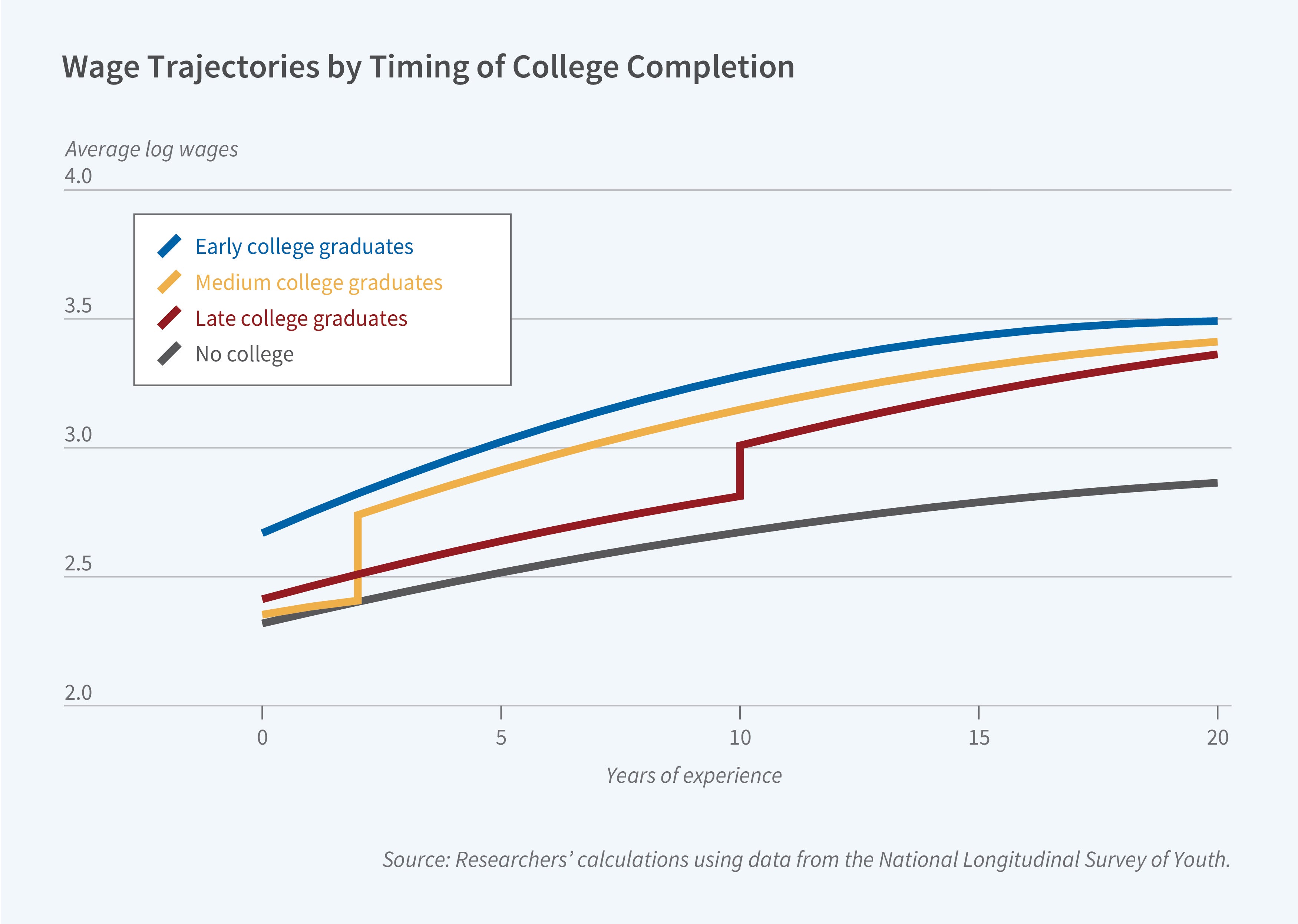Later-in-life college graduation is a more prevalent phenomenon than is generally believed and has important implications for several labor market outcomes.
In Late Bloomers: The Aggregate Implications of Getting Education Later in Life (NBER Working Paper 31874), Zsófia L. Bárány, Moshe Buchinsky, and Pauline Corblet analyze individuals who obtain their college degrees after age 30. About 20 percent of the college graduates from the 1930 birth cohort onwards are in this category, which they label "late bloomers."
Using decadal data from the US Census covering cohorts from 1926 through 1986, the researchers document rising college attainment within each cohort. At age 24, about 10 percent of the 1936 cohort had a college education — at least 16 years of completed schooling — while by age 64 their share rose to almost 20 percent. At age 24 a little more than 25 percent of the 1986 cohort had a college education, and by age 34 this share was almost 40 percent.  The census data also show that late bloomers contribute to a narrowing racial gap in the college share, even as it widens across cohorts at early ages. For the 1930 cohort, the White-Black racial gap in college education at age 30 widens by 6 percentage points, whereas at age 50 the widening is only 3 percentage points. Similarly, the late bloomers contribute to the narrowing of the gender gap. The narrowing of the gender gap from the 1930 to the 1970 cohort is more pronounced at age 50 than at age 30 — a 12.4 versus a 10.4 percentage point reduction.
The authors quantify the contribution of late bloomers to the aggregate increase in educational attainment over time using a shift-share decomposition. The results show that around half of the increase between 1960 and 1990 and more than 70 percent of the increase between 1990 and 2019 is driven by within-cohort increases in college education, namely due to the late bloomers.
Using data from the National Longitudinal Survey of Youth, the researchers also study the returns to college education by age at graduation. They categorize individuals into four groups: "early college" — individuals graduating at or before age 24, "medium college" — those graduating between ages 25 and 29, "late bloomers," those graduating from college at or after 30, and "never college," who never obtain a college degree. The early college group has the highest earnings, while the never college group has the lowest. Before graduation, the medium college group's earnings are similar to those of the never college group. After graduation, their earnings increase but do not quite reach the early college group's level of earnings. The late bloomers earn more than the medium and never college groups before graduating and benefit from a college premium upon graduation, as well as the steepest return to experience among college graduates.
The researchers conclude that analyses that do not account for age at graduation underestimate the value of college education for early-college graduates by an average of about 27 percent. The degree of underestimation varies from about 30 percent for men and 23 percent for women to 35 percent for Black individuals and 40 percent for Hispanics. — Leonardo Vasquez
|

No comments:
Post a Comment